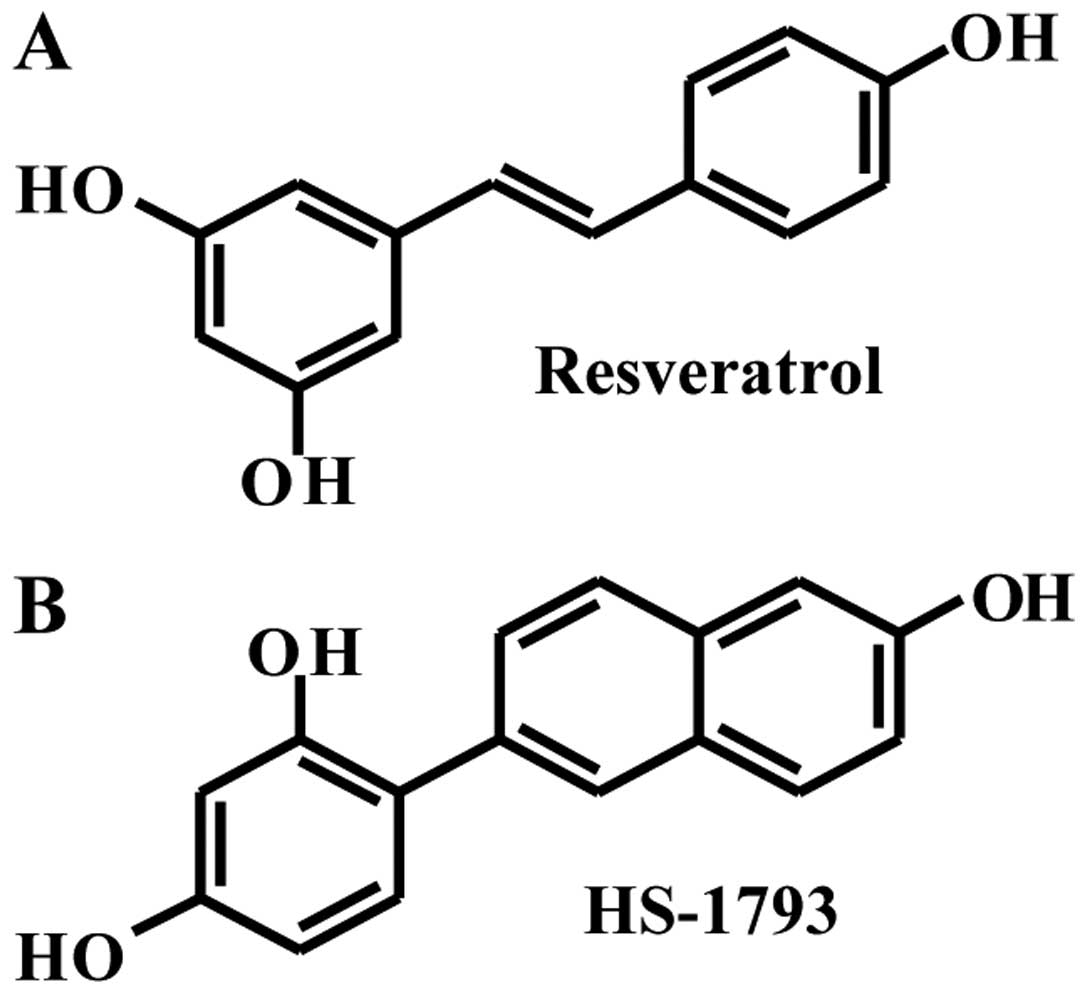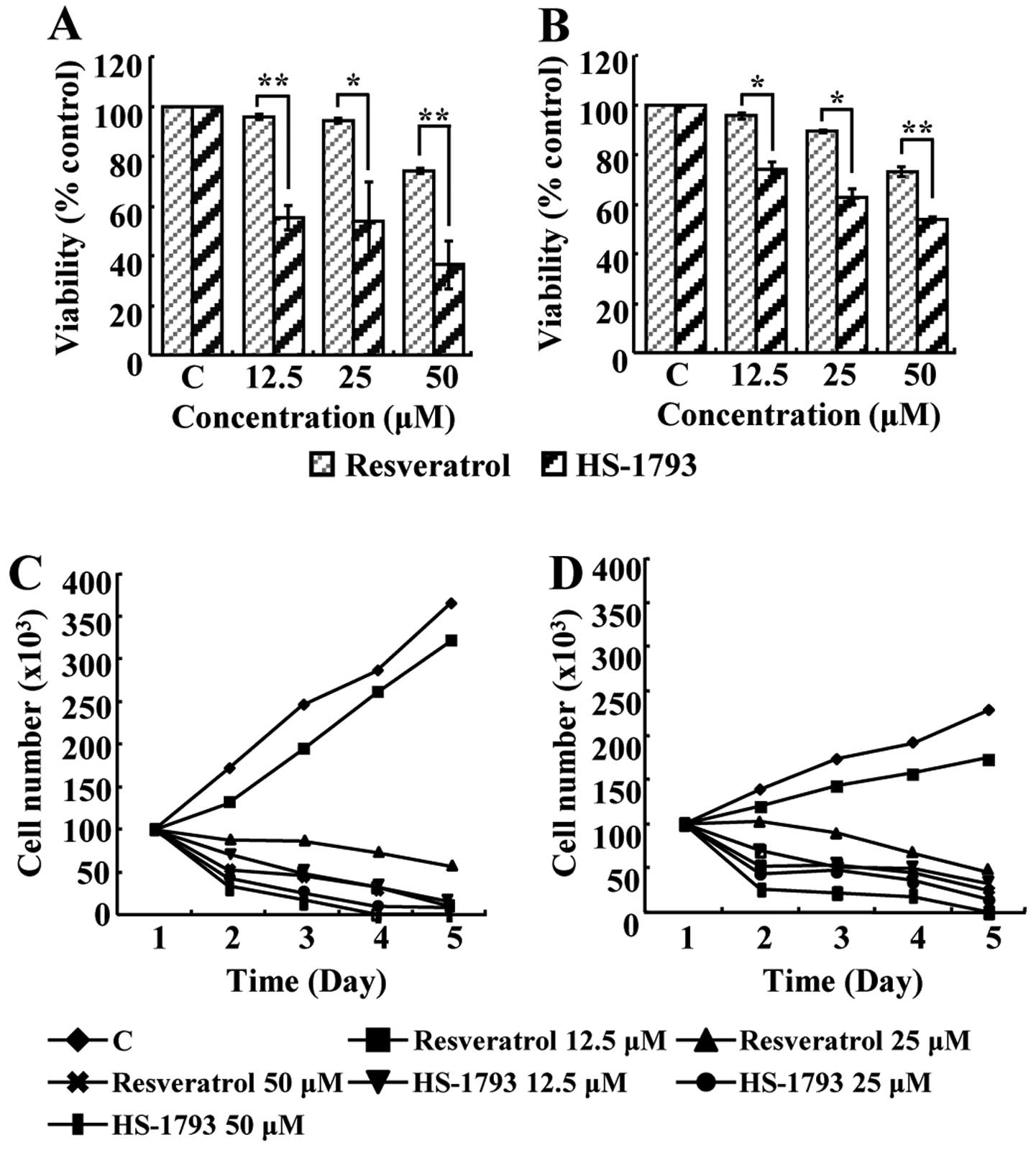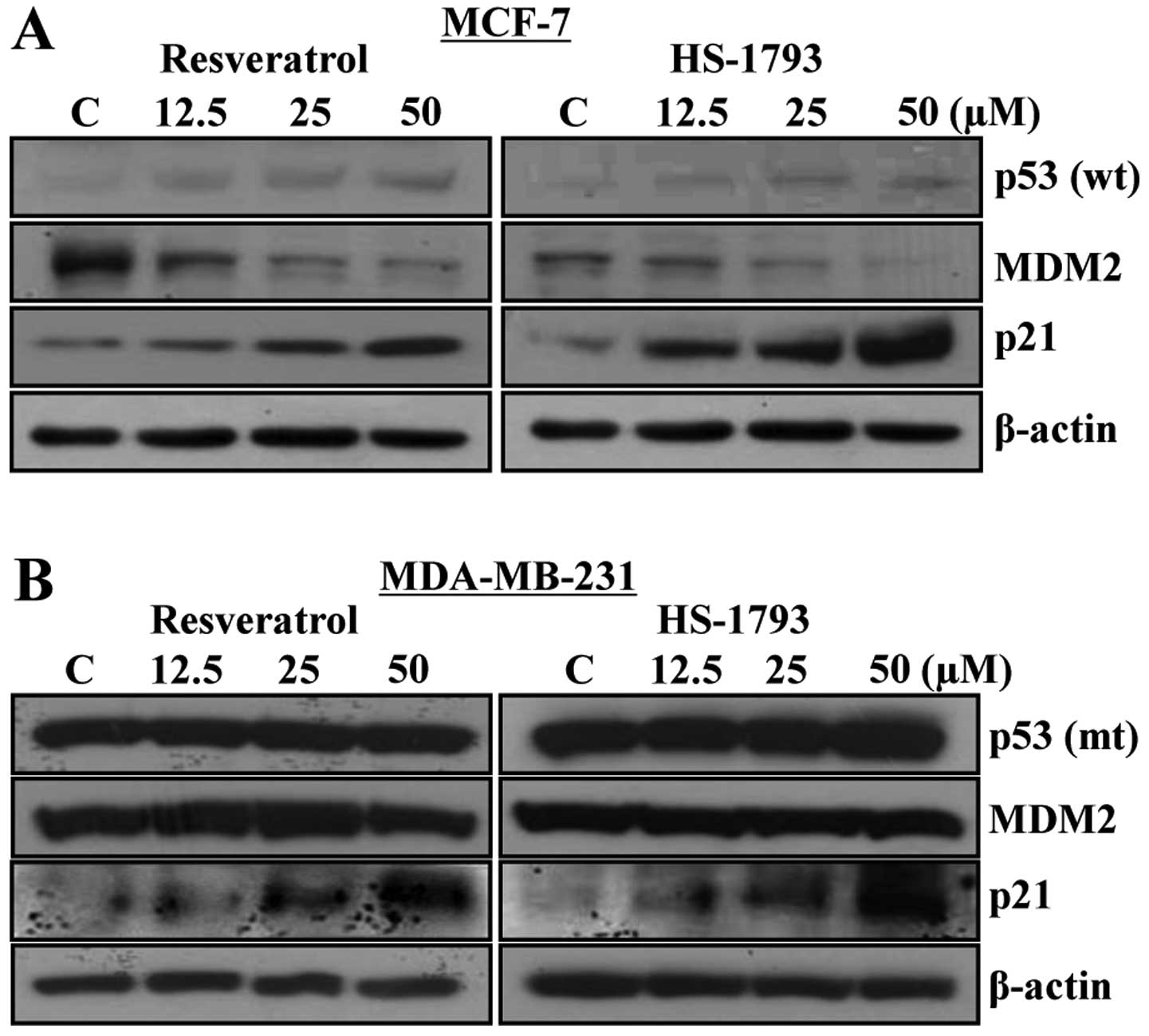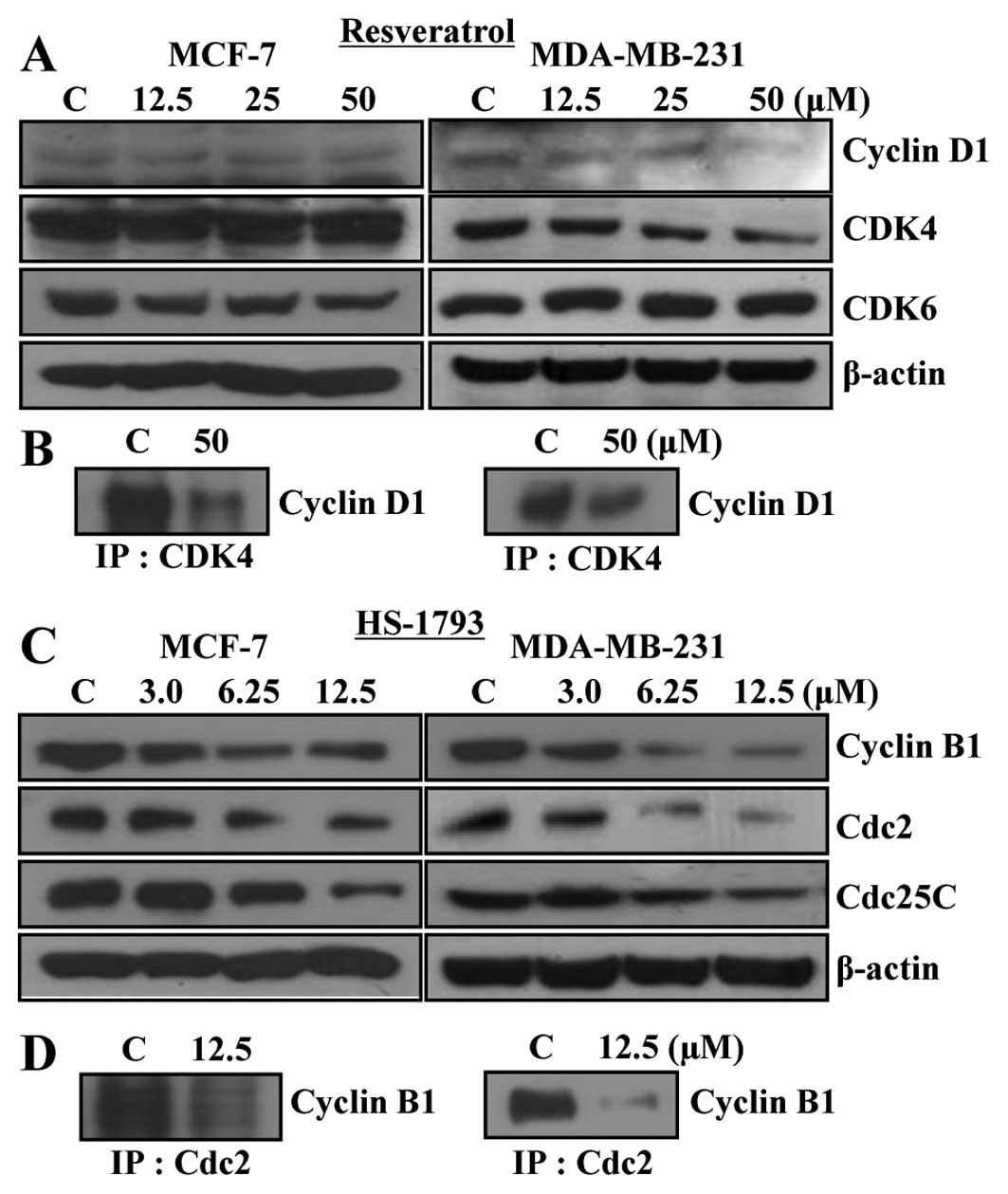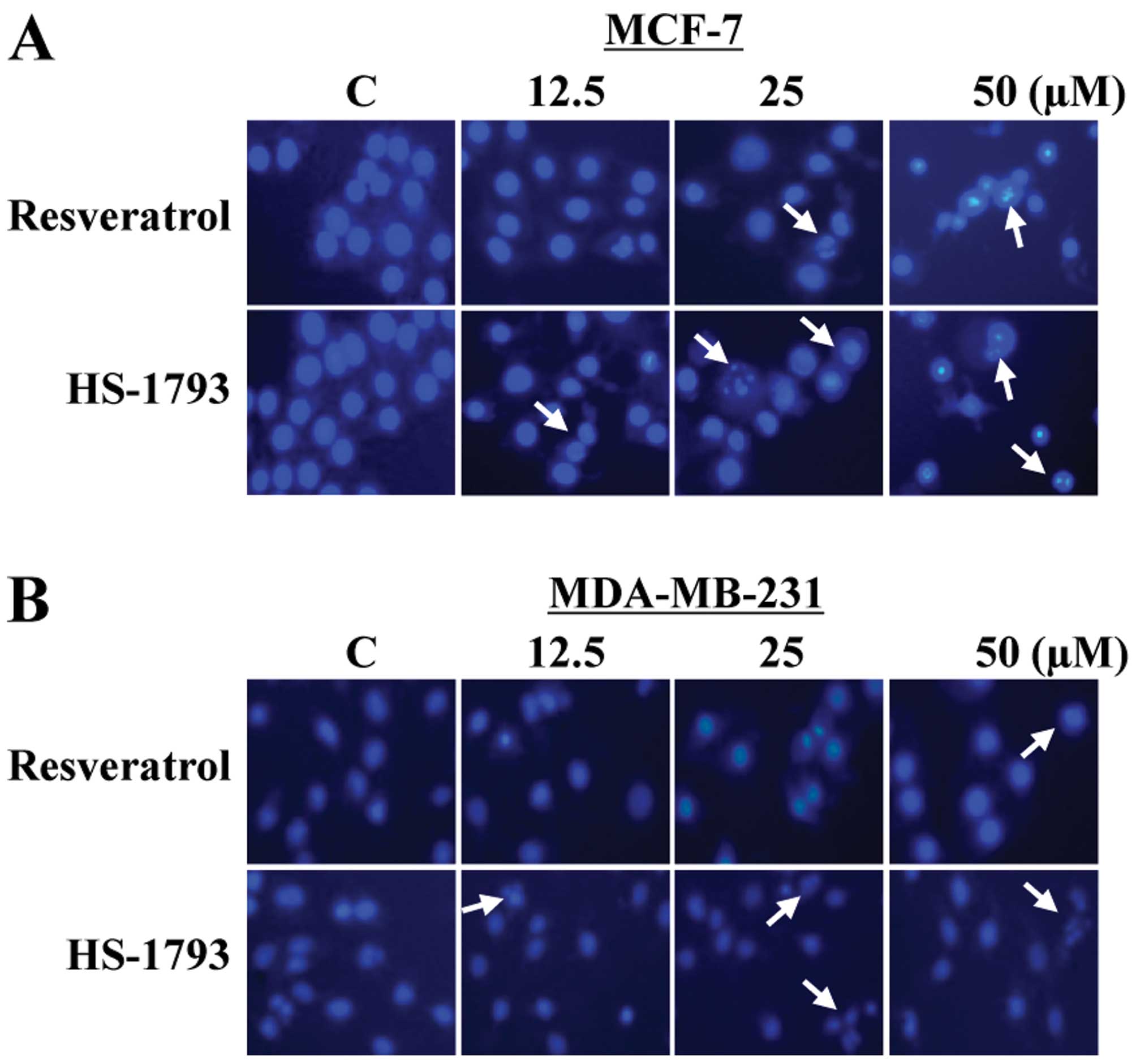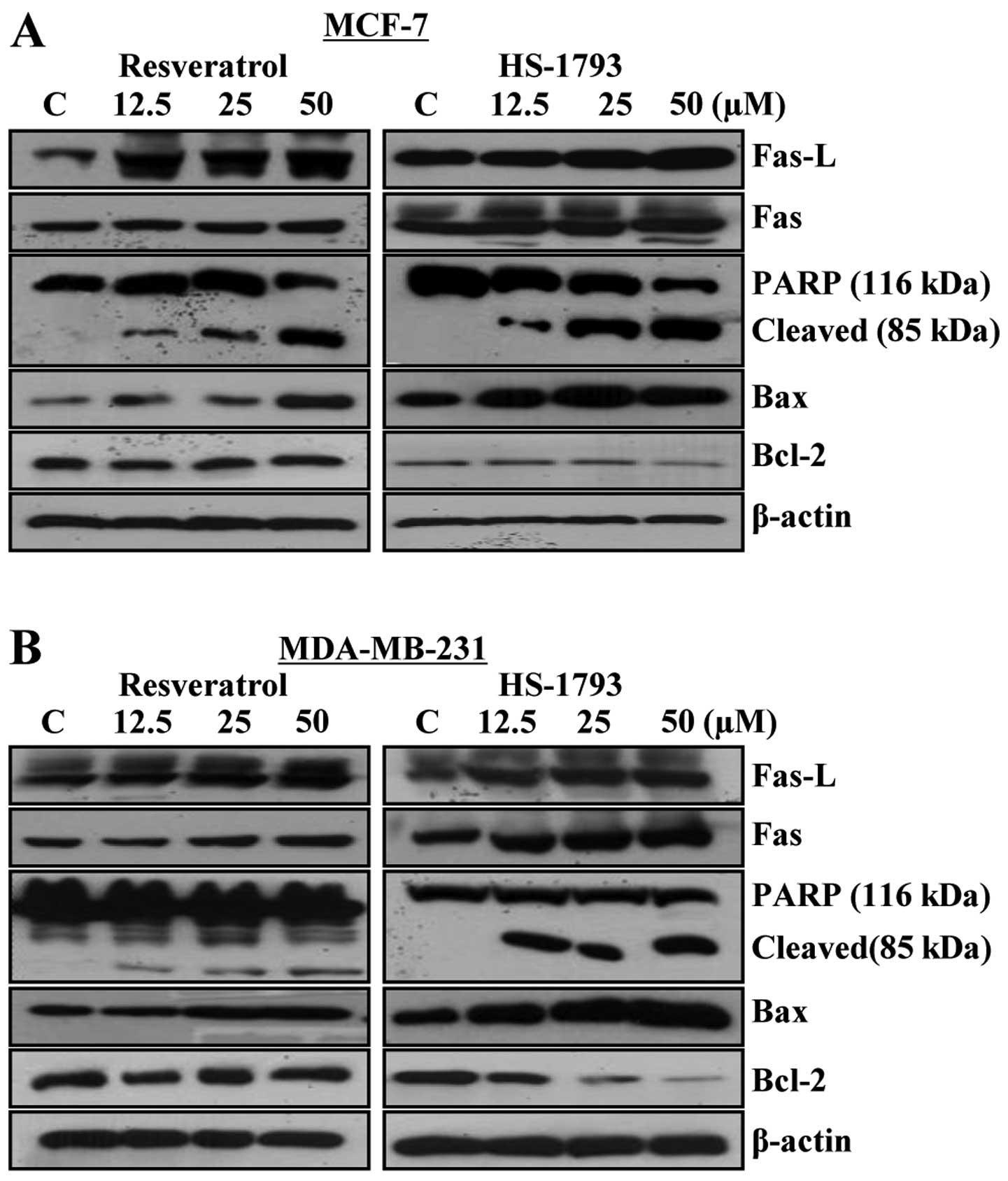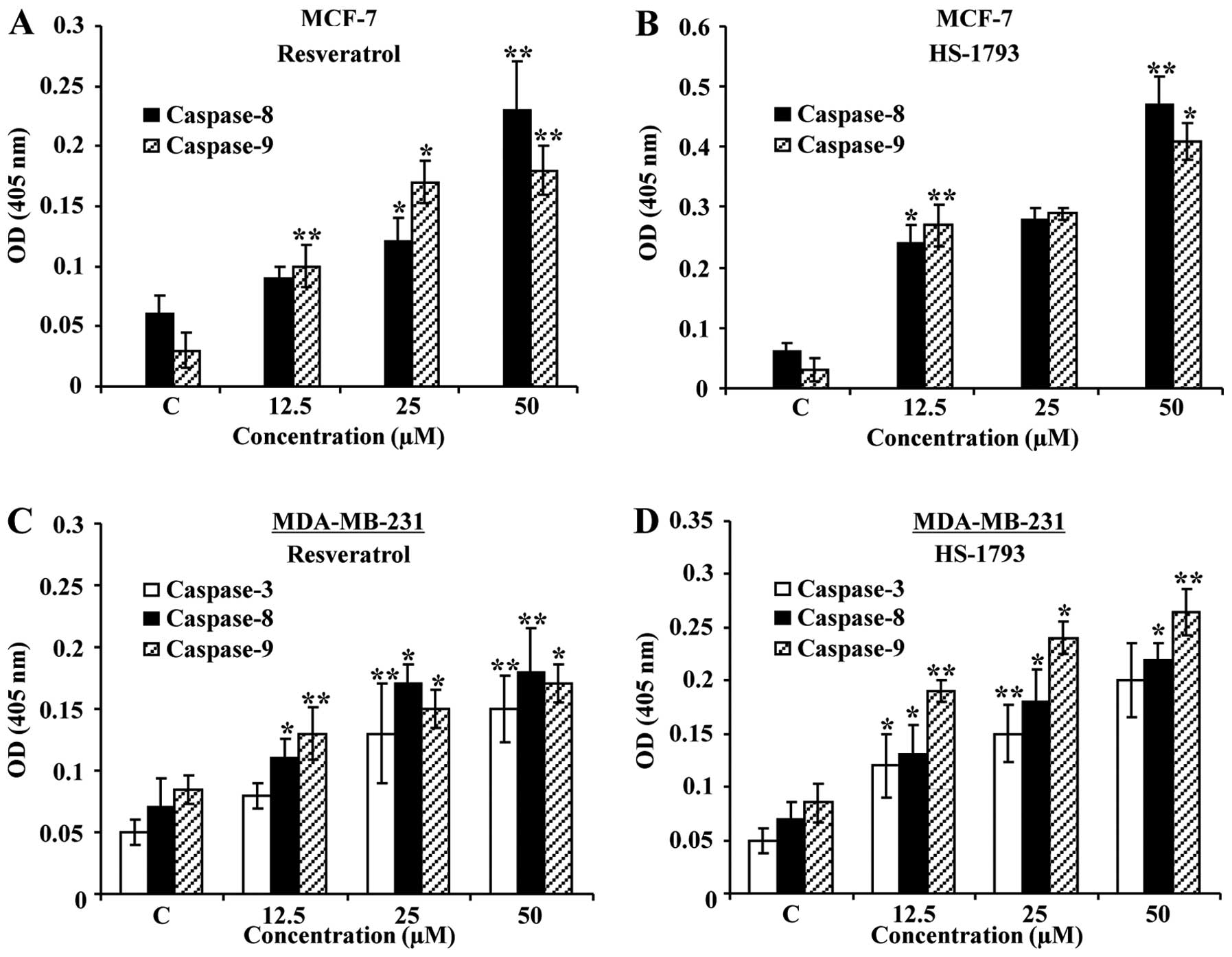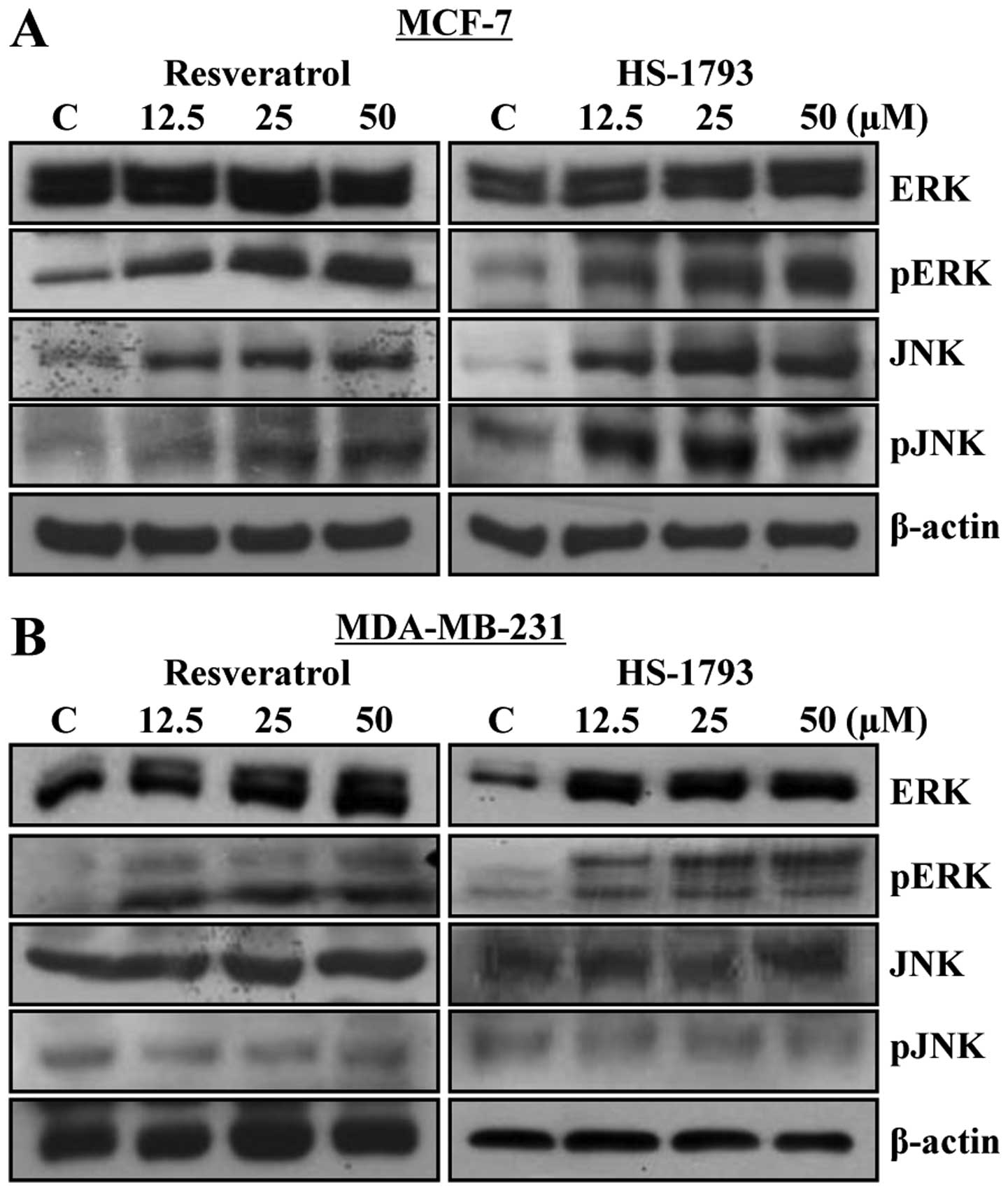|
1.
|
Siegel R, Naishadham D and Jemal A: Cancer
statistics, 2013. CA Cancer J Clin. 63:11–30. 2013. View Article : Google Scholar
|
|
2.
|
DeSantis C, Siegel R, Bandi P and Jemal A:
Breast cancer statistics, 2011. CA Cancer J Clin. 61:409–418. 2011.
View Article : Google Scholar
|
|
3.
|
Kim HJ, Yang KM, Park YS, et al: The novel
resveratrol analogue HS-1793 induces apoptosis via the
mitochondrial pathway in murine breast cancer cells. Int J Oncol.
41:1628–1634. 2012.PubMed/NCBI
|
|
4.
|
Baur JA and Sinclair DA: Therapeutic
potential of resveratrol: the in vivo evidence. Nat Rev Drug
Discov. 5:493–506. 2006. View
Article : Google Scholar : PubMed/NCBI
|
|
5.
|
Marques FZ, Markus MA and Morris BJ:
Resveratrol: cellular actions of a potent natural chemical that
confers a diversity of health benefits. Int J Biochem Cell Biol.
41:2125–2128. 2009. View Article : Google Scholar : PubMed/NCBI
|
|
6.
|
Khan N, Afaq F and Mukhtar H: Cancer
chemoprevention through dietary antioxidants: progress and promise.
Antioxid Redox Signal. 10:475–510. 2008. View Article : Google Scholar : PubMed/NCBI
|
|
7.
|
Fulda S and Debatin KM:
Resveratrol-mediated sensitisation to TRAIL-induced apoptosis
depends on death receptor and mitochondrial signalling. Eur J
Cancer. 41:786–798. 2005. View Article : Google Scholar : PubMed/NCBI
|
|
8.
|
Garvin S, Ollinger K and Dabrosin C:
Resveratrol induces apoptosis and inhibits angiogenesis in human
breast cancer xenografts in vivo. Cancer Lett. 231:113–122. 2006.
View Article : Google Scholar : PubMed/NCBI
|
|
9.
|
Jang M, Cai L, Udeani GO, et al: Cancer
chemopreventive activity of resveratrol, a natural product derived
from grapes. Science. 275:218–220. 1997. View Article : Google Scholar : PubMed/NCBI
|
|
10.
|
Cai YJ, Wei QY, Fang JG, et al: The
3,4-dihydroxyl groups are important for trans-resveratrol analogs
to exhibit enhanced antioxidant and apoptotic activities.
Anticancer Res. 24:999–1002. 2004.PubMed/NCBI
|
|
11.
|
Jeong SH, Lee JS, Jeong NY, et al: A novel
resveratrol analogue HS-1793 treatment overcomes the resistance
conferred by Bcl-2 and is associated with the formation of mature
PML nuclear bodies in renal clear cell carcinoma Caki-1 cells. Int
J Oncol. 35:1353–1360. 2009.
|
|
12.
|
Jeong MH, Yang KM, Choi YJ, et al:
Resveratrol analog, HS-1793 enhance anti-tumor immunity by reducing
the CD4+CD25+ regulatory T cells in FM3A
tumor bearing mice. Int Immunopharmacol. 14:328–333. 2012.
View Article : Google Scholar : PubMed/NCBI
|
|
13.
|
Jeong NY, Yoon YG, Rho JH, et al: The
novel resveratrol analog HS-1793-induced polyploid LNCaP prostate
cancer cells are vulnerable to downregulation of Bcl-xL. Int J
Oncol. 38:1597–1604. 2011.PubMed/NCBI
|
|
14.
|
Jeong SH, Song IS, Kim HK, et al: An
analogue of resveratrol HS-1793 exhibits anticancer activity
against MCF-7 cells via inhibition of mitochondrial biogenesis gene
expression. Mol Cells. 34:357–365. 2012. View Article : Google Scholar : PubMed/NCBI
|
|
15.
|
Kim DH, Hossain MA, Kim MY, et al: A novel
resveratrol analogue, HS-1793, inhibits hypoxia-induced HIF-1alpha
and VEGF expression, and migration in human prostate cancer cells.
Int J Oncol. 43:1915–1924. 2013.PubMed/NCBI
|
|
16.
|
Ma Z, Molavi O, Haddadi A, Lai R, Gossage
RA and Lavasanifar A: Resveratrol analog trans
3,4,5,4'-tetramethoxystilbene (DMU-212) mediates anti-tumor effects
via mechanism different from that of resveratrol. Cancer Chemother
Pharmacol. 63:27–35. 2008.
|
|
17.
|
Kotha A, Sekharam M, Cilenti L, et al:
Resveratrol inhibits Src and Stat3 signaling and induces the
apoptosis of malignant cells containing activated Stat3 protein.
Mol Cancer Ther. 5:621–629. 2006. View Article : Google Scholar : PubMed/NCBI
|
|
18.
|
Momand J, Zambetti GP, Olson DC, George D
and Levine AJ: The mdm-2 oncogene product forms a complex with the
p53 protein and inhibits p53-mediated transactivation. Cell.
69:1237–1245. 1992. View Article : Google Scholar : PubMed/NCBI
|
|
19.
|
Honda R, Tanaka H and Yasuda H:
Oncoprotein MDM2 is a ubiquitin ligase E3 for tumor suppressor p53.
FEBS Lett. 420:25–27. 1997. View Article : Google Scholar : PubMed/NCBI
|
|
20.
|
Makin G and Dive C: Modulating sensitivity
to drug-induced apoptosis: the future for chemotherapy? Breast
Cancer Res. 3:150–153. 2001. View
Article : Google Scholar : PubMed/NCBI
|
|
21.
|
Wilkinson MG and Millar JB: Control of the
eukaryotic cell cycle by MAP kinase signaling pathways. FASEB J.
14:2147–2157. 2000. View Article : Google Scholar : PubMed/NCBI
|
|
22.
|
Bates S, Bonetta L, MacAllan D, et al:
CDK6 (PLSTIRE) and CDK4 (PSK-J3) are a distinct subset of the
cyclin-dependent kinases that associate with cyclin D1. Oncogene.
9:71–79. 1994.PubMed/NCBI
|
|
23.
|
Ellis M, Chew YP, Fallis L, et al:
Degradation of p27(Kip) cdk inhibitor triggered by Kaposi's sarcoma
virus cyclin-cdk6 complex. EMBO J. 18:644–653. 1999.PubMed/NCBI
|
|
24.
|
Taylor WR and Stark GR: Regulation of the
G2/M transition by p53. Oncogene. 20:1803–1815. 2001. View Article : Google Scholar : PubMed/NCBI
|
|
25.
|
Bennett M, Macdonald K, Chan SW, Luzio JP,
Simari R and Weissberg P: Cell surface trafficking of Fas: a rapid
mechanism of p53-mediated apoptosis. Science. 282:290–293. 1998.
View Article : Google Scholar : PubMed/NCBI
|
|
26.
|
Earnshaw WC, Martins LM and Kaufmann SH:
Mammalian caspases: structure, activation, substrates, and
functions during apoptosis. Annu Rev Biochem. 68:383–424. 1999.
View Article : Google Scholar : PubMed/NCBI
|
|
27.
|
Filomeni G, Graziani I, Rotilio G and
Ciriolo MR: trans-Resveratrol induces apoptosis in human breast
cancer cells MCF-7 by the activation of MAP kinases pathways. Genes
Nutr. 2:295–305. 2007. View Article : Google Scholar : PubMed/NCBI
|



